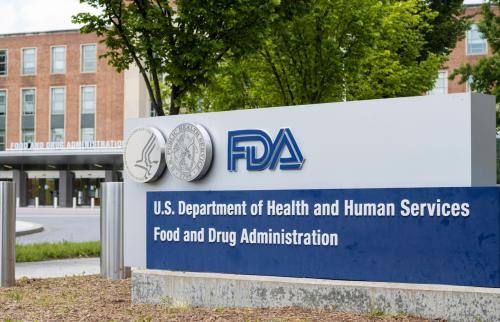The future of the Affordable Care Act (ACA) could depend on the success of federal and state administrators in signing people up in the current open enrollment period—the last one before the 2016 election. If re-enrollment is high, significant numbers of new households sign up, and most people have a positive experience with the process, the new president and Congress taking power in January 2017 will find it politically difficult to make major changes in the ACA’s basic structure. But if a significant number of enrollees drop out, few new enrollments materialize, or potential enrollees view the enrollment process as frustrating and confusing, the ACA could be far more vulnerable to changes, no matter who wins the election.
Ten million households, most of them previously uninsured, now have health insurance purchased on the marketplaces. Most enrollees receive subsidies in the form of tax credits to make their premiums affordable. As of August 2015, 14.6 million more people are covered by Medicaid programs than before the ACA. The proportion of households who lack insurance coverage has dropped from 16 percent in 2010 to 9.2 percent as of March 2015. Nevertheless, over 10 million people eligible for ACA coverage have yet to sign up. Retention of those already covered may be hindered by rising premiums, dissatisfaction with high deductibles or coinsurance in some plans, limited choices of providers offered by plans, or simple ignorance of the necessity to re-enroll. New sign-ups may be limited by lack of information about the plans and subsidies available, difficulties in navigating the sign up process, or perceptions fanned by campaign rhetoric that the ACA is problematic or might disappear. The Obama Administration and the beneficiaries and supporters of the ACA have a huge stake in making this enrollment period a success.
Smooth Shopping and Consumer Assistance
Health insurance is dauntingly complicated, and many consumers who have not previously had coverage need help hacking their way through the jungle of insurance technicalities and figuring out which plan is best for them. To encourage easier and more cost-effective online shopping for plans, the administration has made a concerted effort to simplify the website and implement new tools, such as an out-of-pocket cost-estimator and a search engine, which will show individuals the plans in which their doctors are included. The website will also boast more transparency about drug coverage and prices.
But, the uninsured often need personal assistance throughout the process. The Urban Institute found in 2013 that among individuals most likely to use the marketplaces, only 39.9 percent were confident with terms related to health insurance, like premiums, deductibles, co-payments, etc. Further, a majority of those uninsured are still unaware of health insurance subsidies or that enrollment assistance is even available. Overcoming these knowledge gaps will take a substantial effort and resources. To assist enrollees, the administration is promoting in-person support, including toll-free call centers and in-person assistance during sign-ups and plan selection.
The Retention Challenge
In some places significant increases in premiums pose a real threat to retention. Insurers were unfamiliar with the uninsured population, and have both raised and lowered their premiums based on their experience so far. While there are pockets of stable or slightly decreasing premium rates, the average premium rate change across the 37 states that use HealthCare.gov is a 7.5 percent increase. Moreover, some consumers have been disappointed in their plans. A household may have chosen a plan because it had a very low premium, only to find that it had a very high deductible, so they received little help from their coverage unless they had an expensive illness. Another household might find that the network of providers associated with their plan did not include a provider they particularly wanted to use. Often dissatisfied households who shop around can find a plan that is cheaper or more suitable to their needs—that is the point of having a Marketplace. So the Marketplaces have to balance the benefits of encouraging consumers to shop around against the benefits of making re-enrollment in the same plan automatic, which tends to discourage shopping for a new plan. While the federally facilitated marketplaces (FFMs) supported retention by extending subsidy calculations from the previous year for automatic re-enrollment when the consumer took no action, many enrollees did not change plans when automatic enrollment was an option even when comparable plans with lower premiums were available. In 2014, 25 percent of those re-enrolling switched plans and saved an average of $400.
Renewal of marketplace plans may also be hampered by inadequate information. Another Urban Institute study found that inconsistent messaging in renewal notices, timing of automatic re-enrollment communication, and failure to get across the importance of shopping for plans contributed to consumer confusion and frustration during the re-enrollment process.
The Expansion Challenge
The Department of Health and Human Services (HHS) estimates that 10.5 million currently uninsured people are eligible for marketplace coverage, but this will be a tough cohort to reach. People who knew most about insurance and understood that they needed it—whether because of poor health or difficulty paying for needed care—likely signed up in the first two enrollment periods. The remaining uninsured are predominantly younger (between the ages of 18-34) and from under-served communities (40 percent of the eligible uninsured fall between 139-250 percent of the poverty level), and one-third identify as a minority (19 percent Hispanic, 14 percent African-American, and 2 percent Asian). Approximately 56 percent of the uninsured also have less than $100 in savings, making them feel more vulnerable to premium rates. Finally, 61 percent of uninsured individuals were unaware of subsidies to help alleviate the cost of their premiums.
Although getting low-income earners to sign up has been comparatively easy, convincing those with somewhat more resources to purchase insurance has been found particularly difficult. While over three-quarters of individuals between 100 and 150 percent of the federal poverty level (FPL) – those eligible for the largest subsidies–were successfully enrolled in health insurance in 2015, enrollment among higher earners was much lower. Those eligible for smaller subsidies enrolled far less frequently; only 16 percent of individuals earning between 300 to 400 percent FPL enrolled in plans. Further, only two percent of individuals who were eligible for the marketplace insurance without any subsidy enrolled in a plan. Admittedly, the penalties for not having insurance will be going up in 2016. However, this increase is only from the higher of $325 per person or 2 percent of household income in 2015, to the higher of $625 per person or 2.5 percent of household income in 2016. While the penalty will take effect for enrollment this year, taxpayers will not feel its effect until tax season in 2017.
In short, supporters of the ACA will have to work hard—not just in this enrollment period, but over the next several years—if the ACA is to fulfill the Obama Administration’s promise of near universal health insurance coverage. Yet there is no viable alternative. Republican candidates talk about repealing the ACA and replacing it with less generous tax subsidies for buying private insurance, but these replacement plans would face even more serious implementation obstacles than face the ACA. So far, despite its rocky beginning, the ACA has successfully delivered on its main promise. It has reduced the number of uninsured Americans dramatically and moved the country closer to universal coverage. But sustained effort in this enrollment period will be necessary to keep the momentum going.
The Brookings Institution is committed to quality, independence, and impact.
We are supported by a diverse array of funders. In line with our values and policies, each Brookings publication represents the sole views of its author(s).



Commentary
Enrollment challenges for the Affordable Care Act (ACA)
November 20, 2015